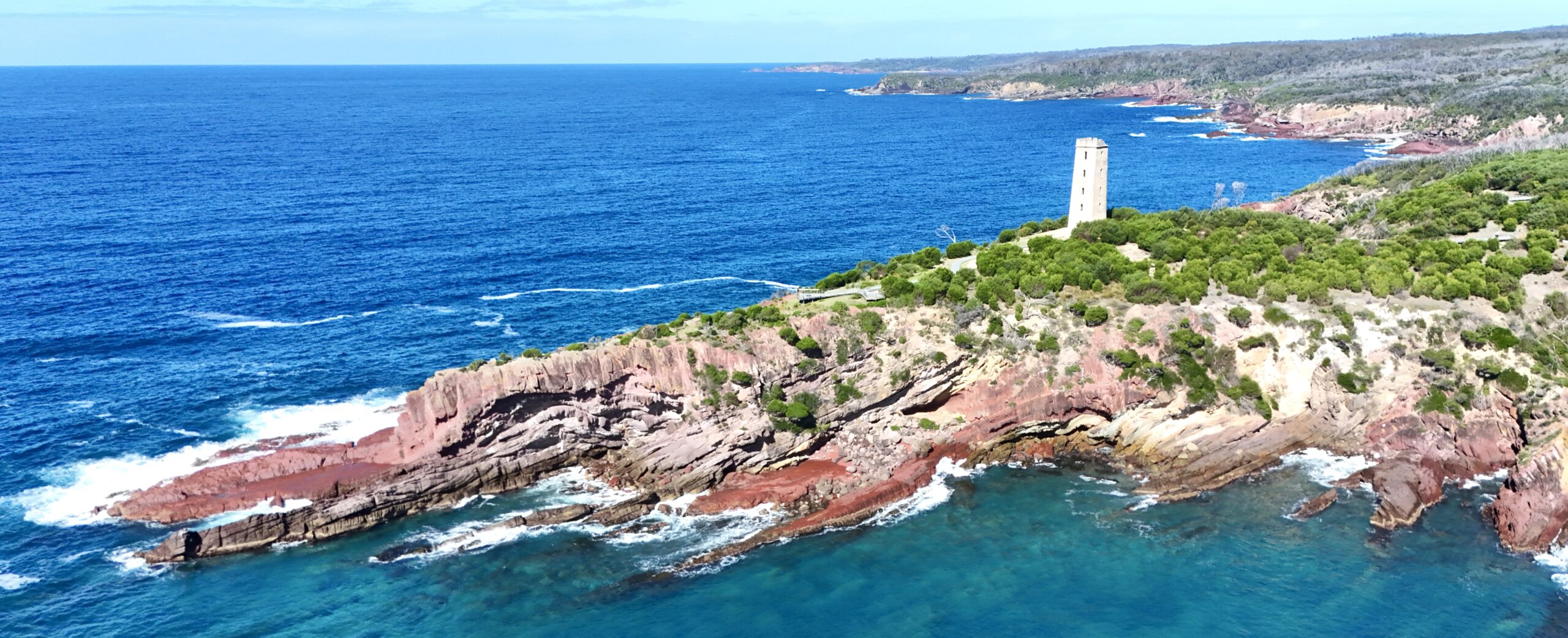
Perched on the appropriately named Red Point headland overlooking the Twofold Bay, Boyds Tower stands as a witness to colonial ambition, maritime history, and commercial enterprise along Australia’s southeastern coastline. Unlike its fully functional lighthouse neighbours at Green Cape and Montague Island, this distinctive stone tower represents an intriguing historical anomaly; a structure originally conceived not as a government navigational aid but as a private commercial venture that would ultimately serve a purpose quite different from its creator’s original vision.


Constructed in 1847, Boyds Tower was commissioned by Benjamin Boyd, a flamboyant Scottish entrepreneur, banker, and pastoralist who established an extensive commercial empire centred around the nearby settlement he eponymously named Boydtown. The tower stands as perhaps the most enduring physical remnant of Boyd’s grand ambitions for developing this remote section of the New South Wales coast into a thriving commercial centre to rival Sydney itself.


Unlike the cylindrical forms of traditional lighthouses, Boyds Tower features a distinctive square shape, capped with a crow’s nest platform rather than a lantern room. Constructed from local yellow sandstone quarried from the surrounding headland, the tower rises approximately 23 meters from its foundation to its summit, its warm golden hue creates a striking contrast against the often dramatic skies and sapphire blue waters that surround it.
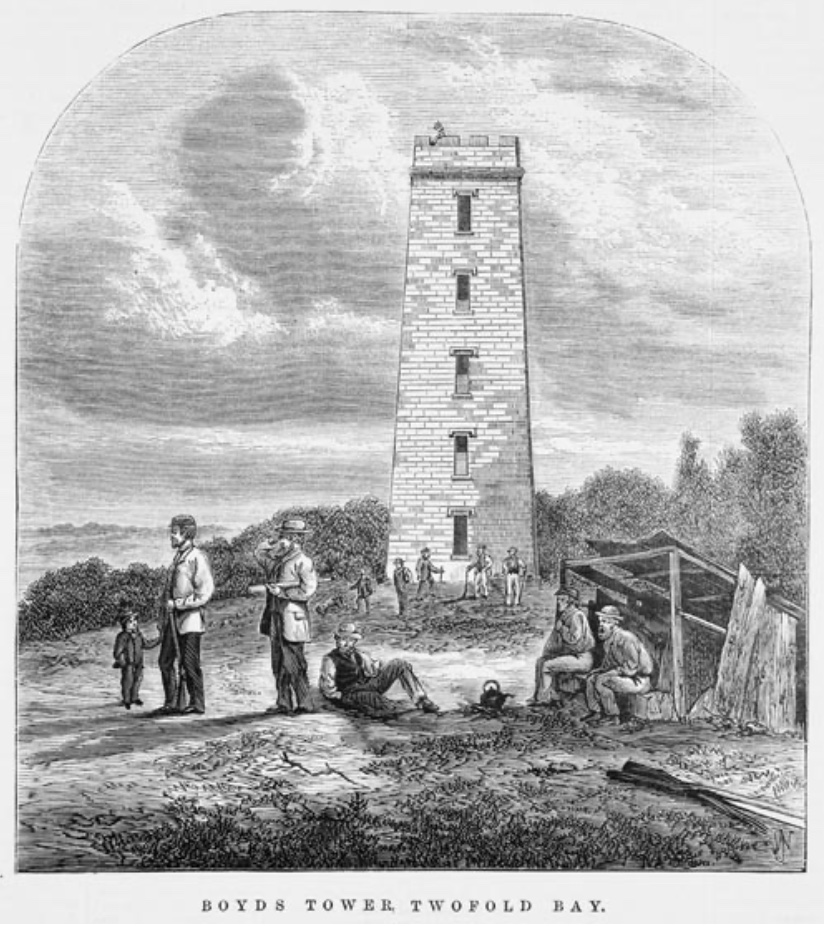
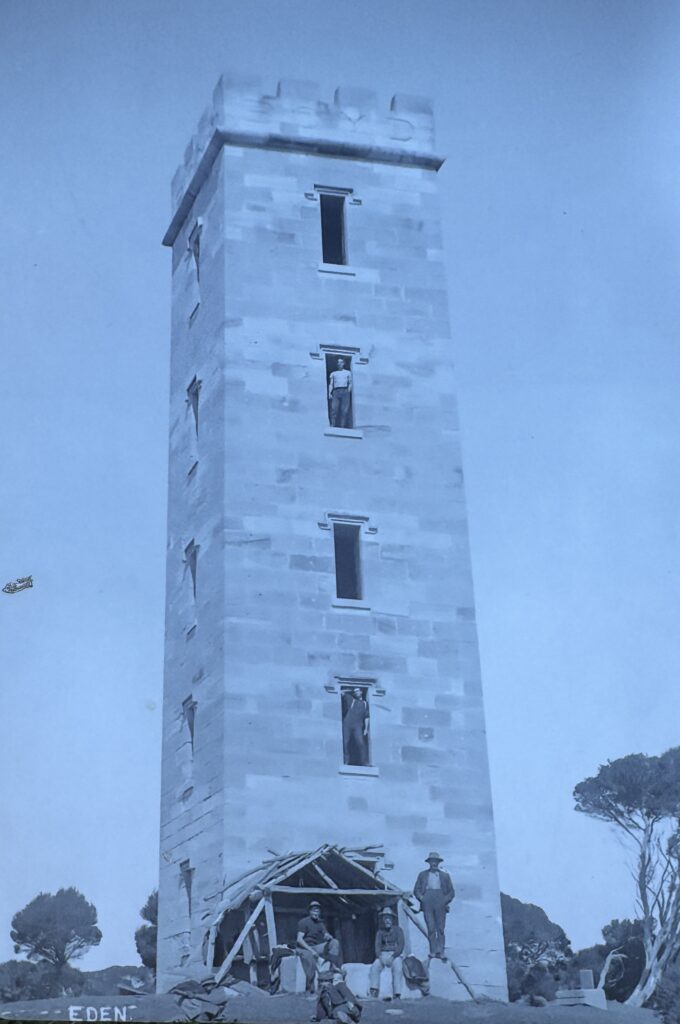
The tower’s design reflects both functional considerations and Boyd’s characteristic flair for the dramatic. Architectural historians note elements of Scottish baronial style in its construction, particularly in the crenelated top section, suggesting Boyd’s desire to create not merely a functional structure but a statement of his authority and ambition in this remote colonial outpost. The tower bears Boyd’s family motto “Confido” (I trust) prominently carved into its eastern face—a lasting testament to its creator’s self-assurance and grand vision.
Benjamin Boyd’s original intention for the tower reflects the entrepreneurial spirit that characterised much of Australia’s colonial development. As the owner of extensive whaling operations along the coast and a substantial shipping fleet, Boyd conceived the tower primarily as a lookout post for spotting migrating whales. From its commanding position 35 meters above sea level, the tower provided an uninterrupted view across the waters of Twofold Bay and the open ocean beyond, allowing Boyd’s whaling crews to be directed efficiently toward their quarry.
The tower also served a secondary function as a private navigational aid for Boyd’s vessels entering Twofold Bay, guiding them safely to his ambitious port development at Boydtown. Historical records indicate Boyd sought government permission to install a proper light in the tower, effectively establishing a private lighthouse, but this request was denied—perhaps reflecting official concerns about allowing such a critical navigational function to remain in private rather than government hands.
The construction of the tower itself represents a remarkable feat of colonial engineering and determination. The remote location necessitated the establishment of a temporary quarry on the headland, with the sandstone blocks laboriously cut, shaped, and raised into position using rudimentary equipment and techniques. The quality of this workmanship is evidenced by the tower’s survival through more than 175 years of exposure to extreme coastal conditions, a testament to the skill of the stonemasons who created it.
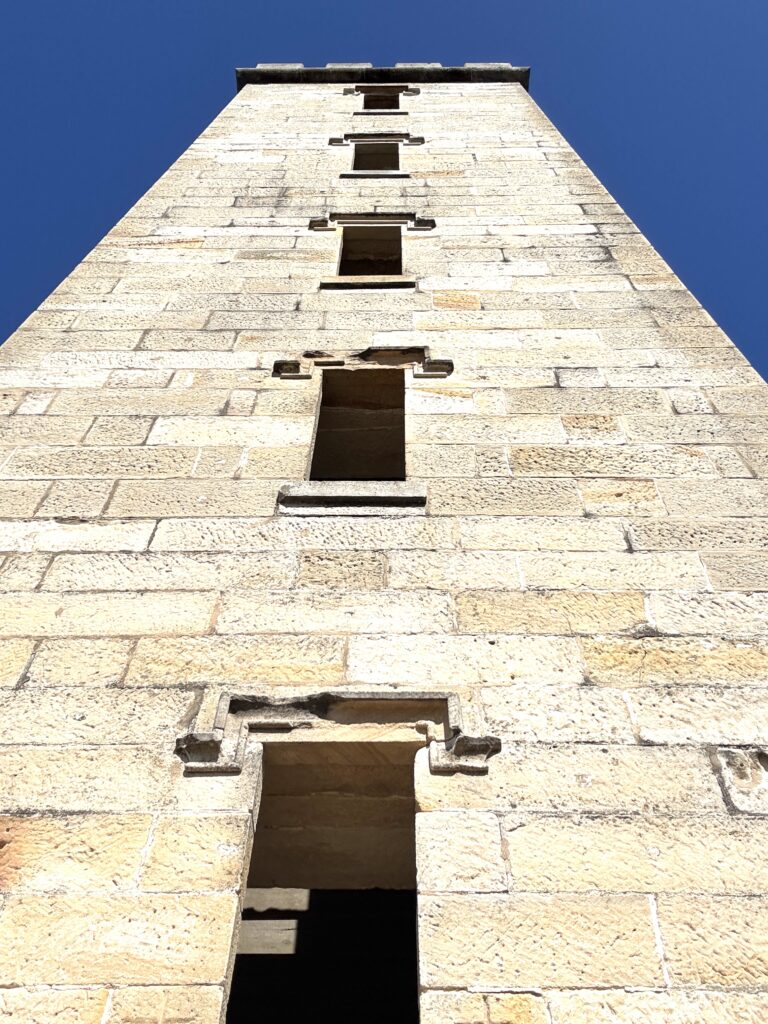
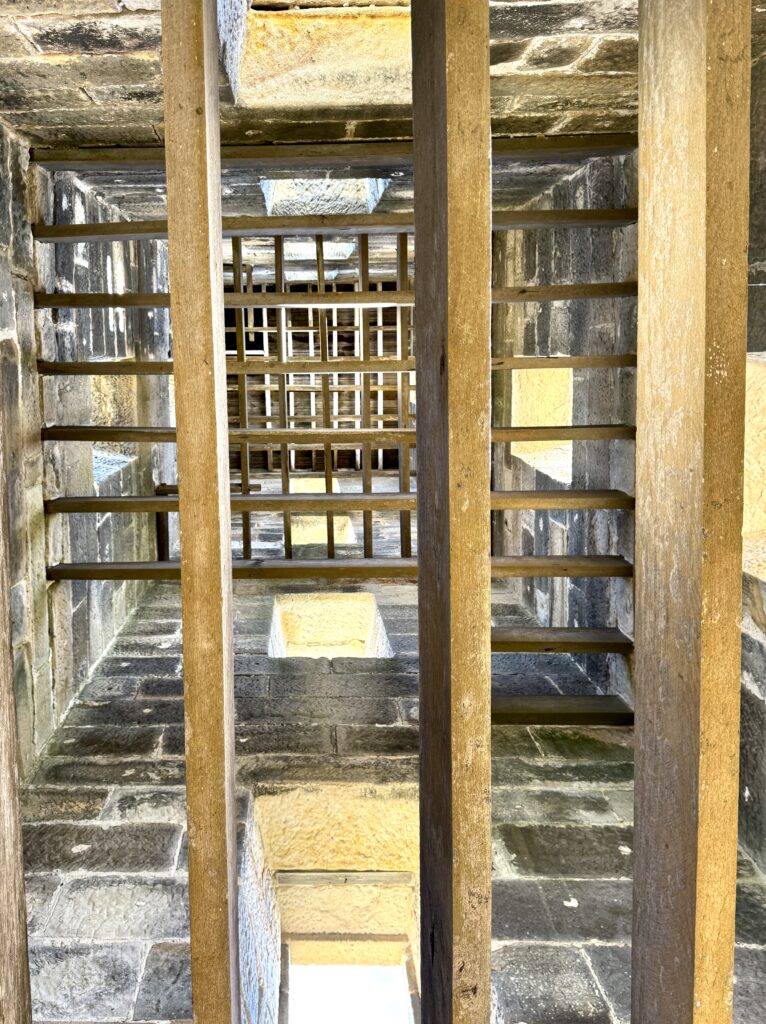

Boyd’s ambitious plans for his tower and the surrounding settlement would ultimately prove short-lived. Financial difficulties emerged in the early 1850s, compounded by the disruptive economic effects of the Australian gold rushes, which drew workers away from Boyd’s enterprises. By 1853, Boyd had departed Australia to seek new opportunities, leaving his commercial empire to gradually collapse. His mysterious disappearance in the Solomon Islands in 1851 while attempting to rebuild his fortunes added a final dramatic chapter to the story of this colonial entrepreneur.
Following Boyd’s departure and presumed death, the tower entered a period of sporadic use and gradual decline. Local whaling operations continued in Twofold Bay well into the late 19th century, with the tower occasionally serving its original purpose as a whale spotting station. Intermittently, it functioned as an unofficial navigational marker for vessels entering the bay, though never with the formal status or equipment of a proper lighthouse.

The tower’s sturdy construction allowed it to weather decades of neglect, though not without suffering damage. In 1860, a severe lightning strike significantly damaged the top section of the tower, giving it the distinctive uneven appearance that characterises it to this day. The partial ruins of its crow’s nest platform remain a visual reminder of both natural forces and human abandonment.
Though never home to resident keepers in the manner of true lighthouses, Boyd’s Tower accrued its own collection of fascinating stories and local lore during its periods of occupation. Whaling crews stationed in the tower recorded sightings of extraordinary maritime phenomena, including massive whale pods numbering in the hundreds and encounters with rarely seen deep-ocean species driven closer to shore during unusual weather conditions.
Particularly notable are accounts from the 1860s and 1870s describing the cooperative hunting relationship between local orcas (killer whales) and human whalers in Twofold Bay. According to these reports, a pod of distinctive orcas, individually named by the whalers, would herd whales toward the bay and alert whaling crews to their presence near the tower. The whalers believed these orcas helped them in exchange for being allowed to feed on the tongue and lips of the whale carcasses—a remarkable example of interspecies cooperation documented nowhere else in Australia.

to herd whales into the shallows of Twofold Bay

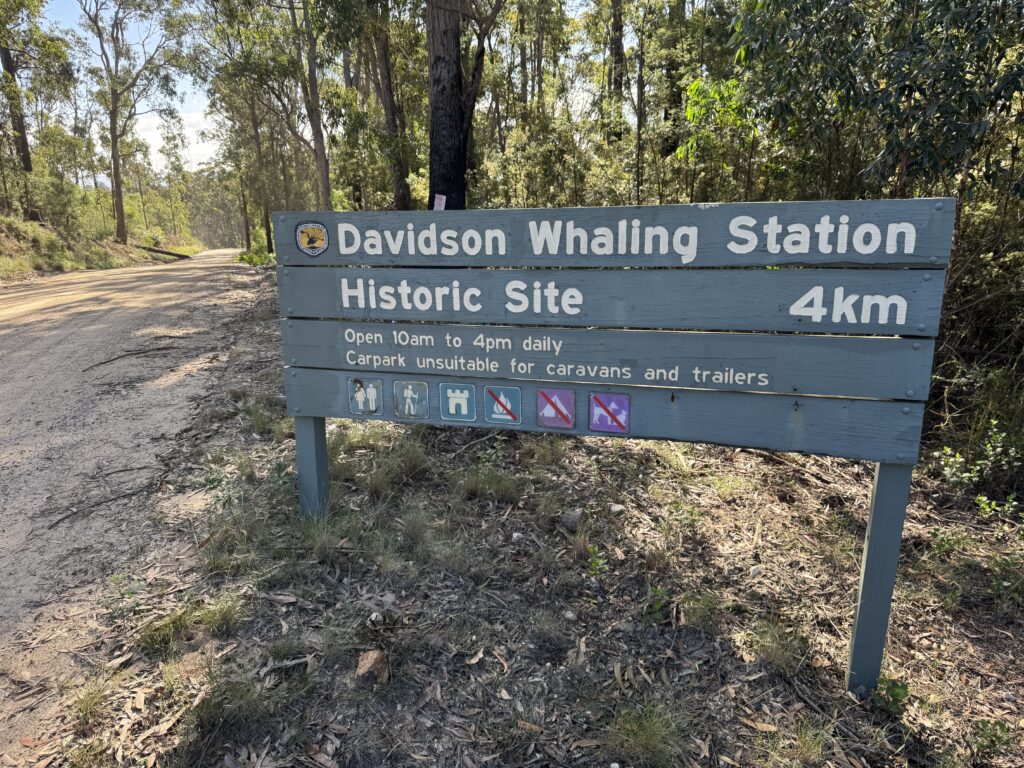
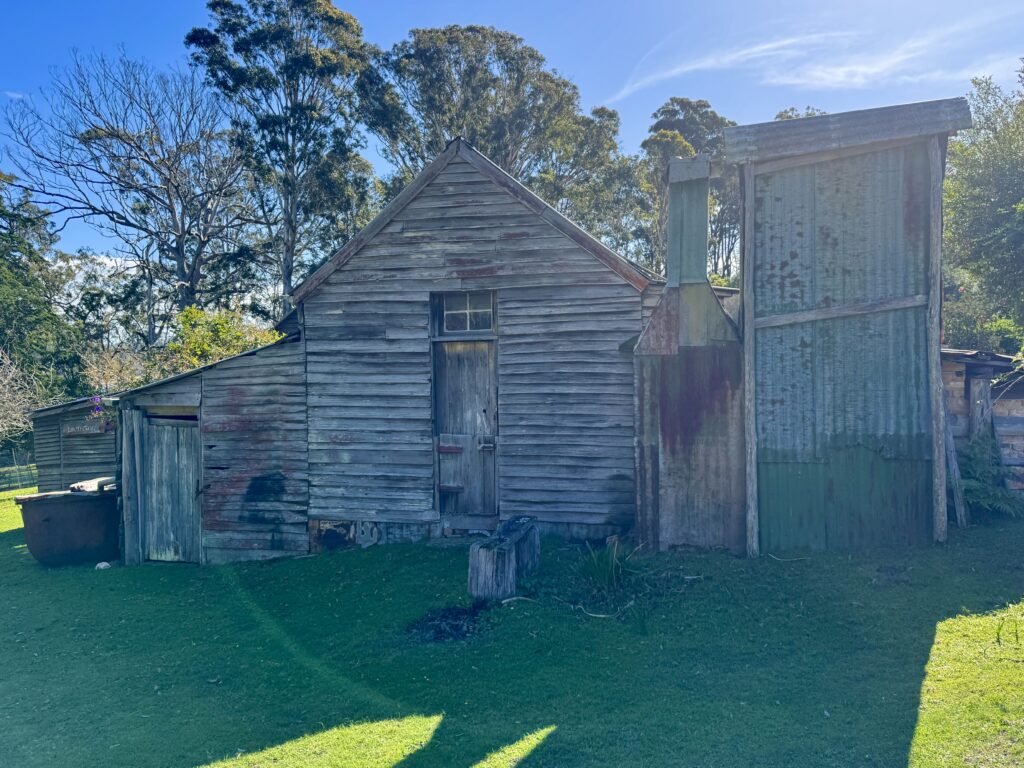
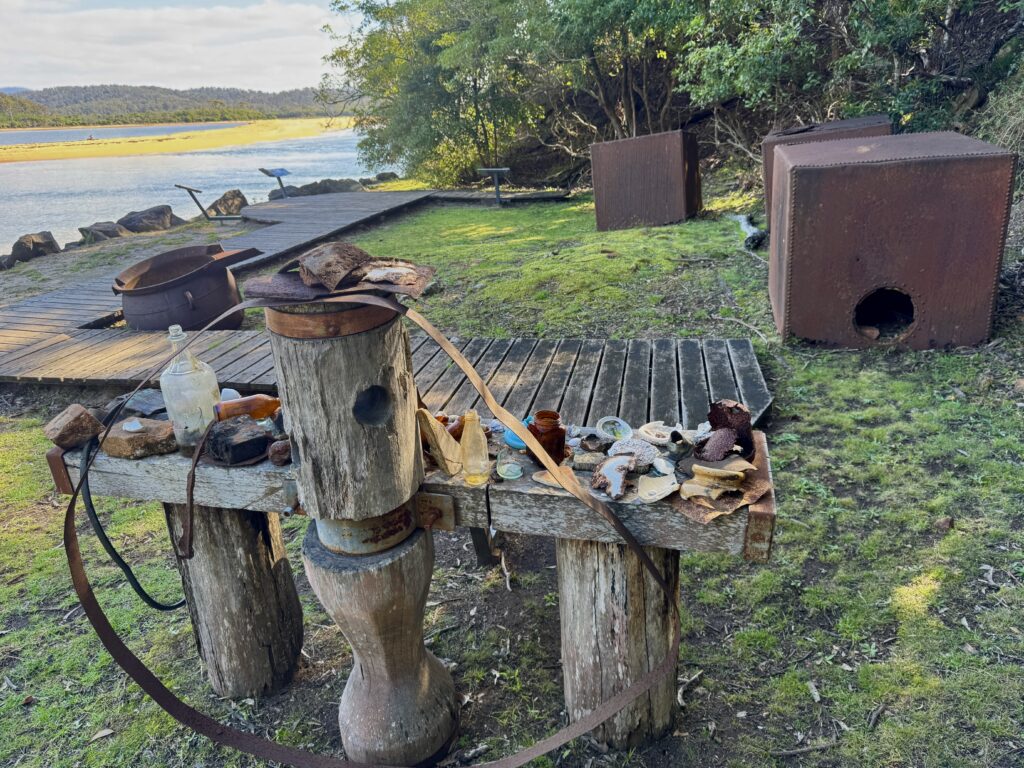
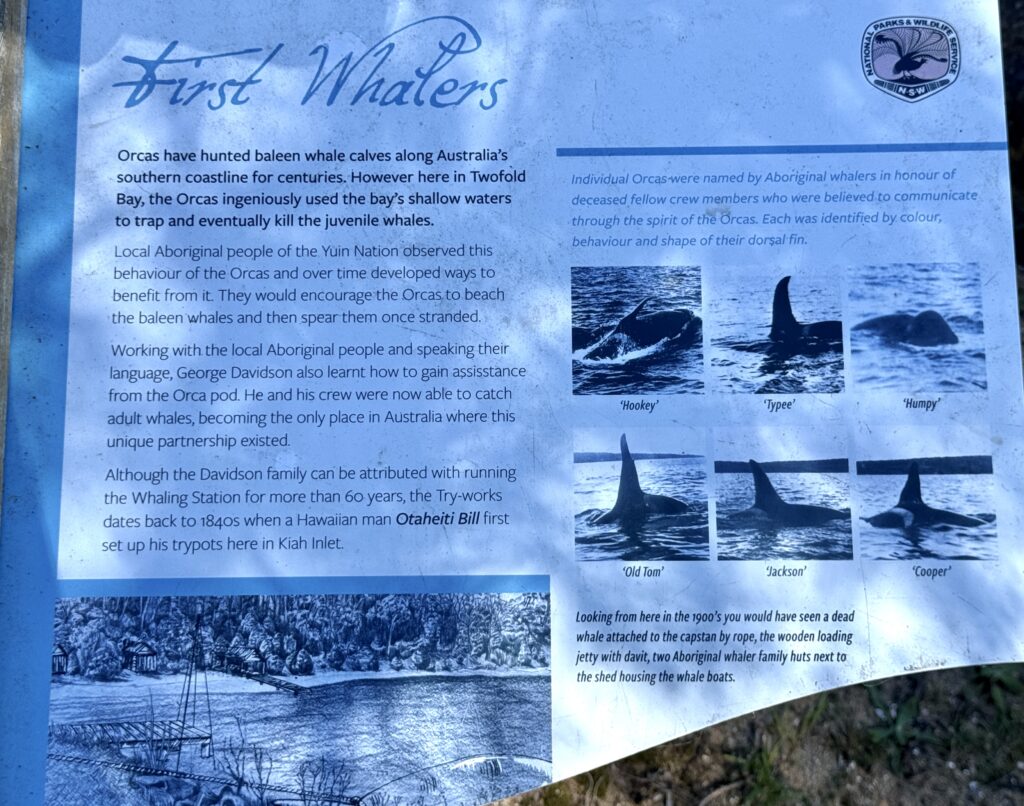
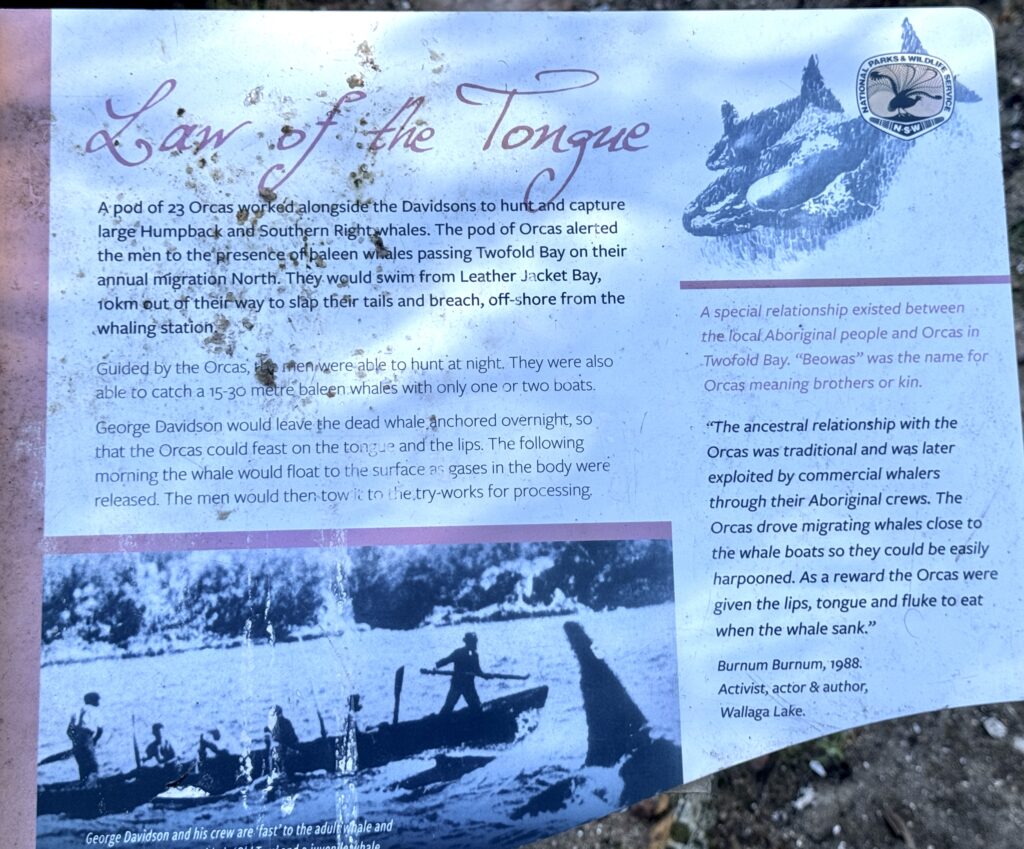
Local folklore also includes more supernatural elements, with the tower featuring prominently in indigenous stories as a place where the boundary between spiritual and physical worlds grows thin during certain celestial alignments. Later European settlers added their own layer of mythology, including persistent rumours of hidden chambers within the tower’s base where Boyd supposedly concealed portions of his wealth before his final departure from Australia.
Perhaps most compelling are the stories connected to Boyd himself, whose larger-than-life personality and mysterious disappearance lent themselves readily to legend-making. Local tradition holds that on stormy nights, the figure of Boyd himself can be seen standing at the tower’s summit, gazing out toward the horizon as if still waiting for the return of his ships. Whether viewed as ghostly apparition or simply romantically embellished local history, these stories reflect the tower’s powerful hold on the collective imagination of the region.

The late 19th and early 20th centuries saw Boyds Tower largely abandoned to the elements, serving occasionally as shelter for fishermen or an adventurous destination for local explorers. Its isolated position and distinctive form made it a natural navigational landmark for coastal vessels, though it remained officially unrecognised in maritime charts from this period.
The tower’s fortunes began to change in the early 20th century as appreciation for Australia’s colonial heritage grew. In 1917, the surrounding land was declared a public reserve, with the tower itself receiving protection as a site of historical significance. Limited restoration work was undertaken in the 1930s, primarily focused on stabilizing the structure rather than attempting to return it to its original appearance.
The establishment of Ben Boyd National Park in 1971 marked a turning point in the tower’s conservation, integrating it into a broader protected landscape that recognised both its historical significance and its place within a remarkable coastal environment. The National Parks and Wildlife Service assumed responsibility for the tower’s maintenance, implementing a more comprehensive conservation program that continues to the present day.

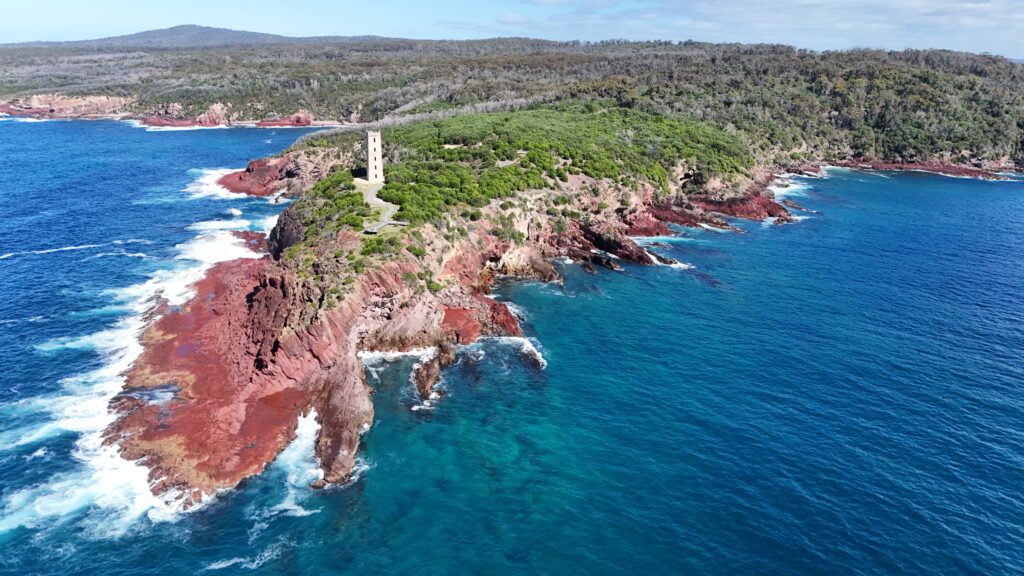
Modern visitors to Boyds Tower encounter a structure that wears its history visibly in its weather-worn stonework and partially ruined crown. Conservation philosophy has focused on preserving the tower in its authentic state rather than attempting extensive reconstruction, allowing visitors to appreciate both its original craftsmanship and the subsequent impacts of time and natural forces.
The surrounding headland offers spectacular views similar to those that would have greeted Boyd’s whale spotters nearly two centuries ago, though today’s visitors are more likely to be scanning the waters for humpback whales during their annual migrations—now protected rather than hunted. The tower serves as the northern terminus of the renowned Light to Light Walk, a 30-kilometer coastal hiking trail that links this historical structure with the fully functional Green Cape Lighthouse to the south.


As it approaches its 180th anniversary, Boyds Tower stands as a multifaceted monument to Australia’s maritime heritage—a physical embodiment of colonial ambition, entrepreneurial vision, and the complex relationship between human enterprise and the natural environment. Neither fully lighthouse nor completely ruined, it occupies a unique position in the constellation of coastal landmarks that define Australia’s relationship with its surrounding seas.